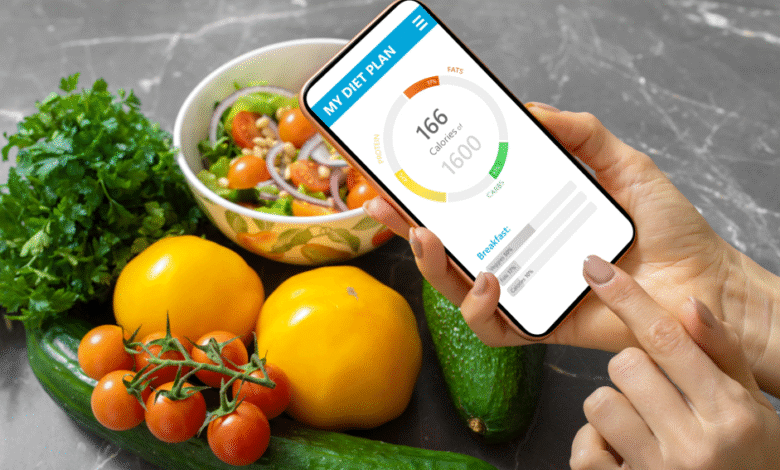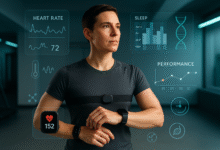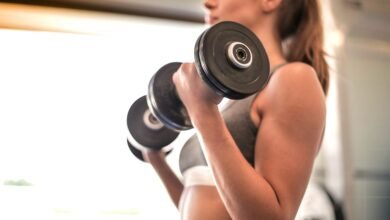Nutrition Tracking with AI: Are Smart Apps Really Accurate?
Discover if AI nutrition tracking apps are truly accurate. Learn about food recognition technology, calorie counting precision, and which smart nutrition apps deliver reliable results.

The promise sounds too good to be true: snap a photo of your meal and instantly know its exact calorie count and nutritional breakdown. AI nutrition tracking apps have revolutionized how millions approach food logging, transforming the tedious process of manual entry into something as simple as taking a picture. With apps like Cal AI, SnapCalorie, and Calorie Mama claiming to deliver nutrition tracking with AI that rivals professional nutritionists, consumers are understandably excited about this technology.
But behind the sleek interfaces and bold marketing claims lies a more complex reality. Recent scientific studies reveal significant accuracy gaps in AI food recognition systems, particularly when dealing with mixed dishes, cultural foods, and portion size estimation. A comprehensive University of Sydney study published in Nutrients found that AI-enabled food image recognition apps showed error rates ranging from 0.09% to 38% for calorie estimation, with particularly poor performance on Asian cuisines and complex meals.
As smart nutrition apps become increasingly sophisticated, using machine learning and computer vision to identify thousands of food items, the question remains: can we truly trust these digital nutritionists with our health goals? This article examines the current state of nutrition app accuracy, explores the limitations of AI food technology, and provides practical guidance for choosing reliable food tracking apps that deliver genuine value.
EXPLORE THE CONTENTS
How AI Nutrition Tracking Technology Works
The Science Behind Food Recognition
AI food recognition relies on sophisticated computer vision and deep learning algorithms trained on vast databases of food images. When you photograph your meal, these systems analyze visual characteristics like color, texture, shape, and context to identify individual food items. The most advanced nutrition tracking apps use convolutional neural networks (CNNs) that have been trained on hundreds of thousands of food photographs from cuisines worldwide.
Companies like Passio AI and LogMeal have developed specialized food image recognition APIs that power many popular apps. These systems employ multiple recognition approaches:
- Single-food identification for simple items like apples or bananas
- Multi-food detection for complex plates with various ingredients
- Volume estimation using depth sensors and visual cues
- Portion size calculation based on reference objects or learned patterns
Machine Learning and Nutritional Database Integration
Once foods are identified, AI nutrition apps cross-reference results with extensive nutritional databases. Most apps combine multiple data sources, including USDA nutritional information, restaurant menu data, and user-generated entries. The challenge lies in matching visual recognition results with accurate nutritional profiles, especially for homemade or culturally specific dishes.
Machine learning algorithms continuously refine their accuracy by learning from user corrections and feedback. However, this improvement process is gradual and varies significantly between different food categories and cuisines.
Current Accuracy Rates of Popular AI Nutrition Apps
Real-World Performance Data
Recent research provides sobering insights into nutrition app accuracy. A study evaluating popular food tracking apps found concerning discrepancies in calorie tracking accuracy:
- MyFitnessPal: Approximately 97% accuracy for simple foods, but significantly lower for complex meals
- Fastic: 92% accuracy rate according to university testing
- Cal AI: User reviews suggest around 80% accuracy, with notable failures in meal logging
The Cultural Food Recognition Problem
AI food recognition systems demonstrate significant bias toward Western cuisines. The University of Sydney research revealed that nutrition tracking apps consistently struggle with Asian dishes:
- Beef pho: Calories overestimated by 49%
- Pearl milk tea: Calorie underestimations up to 76%
- Mixed Asian dishes: Frequently misidentified or estimated incorrectly
This cultural gap in food image recognition stems from training datasets that predominantly feature Western foods, highlighting a major limitation in current AI nutrition apps.
Portion Size Estimation Challenges
Portion size estimation remains one of the biggest hurdles for smart nutrition apps. Without standardized reference objects or specialized hardware, AI systems often struggle to accurately determine food quantities. Research shows that volume estimation errors can compound calorie miscalculations by 20-40%.
Limitations and Challenges of AI Food Recognition
Technical Limitations
AI food recognition technology faces several fundamental challenges that impact nutrition tracking accuracy:
Complex Food Identification: Mixed dishes like casseroles, soups, or layered foods confuse AI systems that excel at identifying individual ingredients. A bowl of beef stew might be recognized as separate components rather than a unified dish with specific nutritional properties.
Lighting and Image Quality: Poor lighting, shadows, or low-resolution photos significantly reduce recognition accuracy. Many users report failed food logging when taking pictures in restaurants or dimly lit environments.
Hidden Ingredients: AI cannot detect ingredients that aren’t visually obvious. Cooking oils, seasonings, sauces, and preparation methods dramatically affect nutritional content but remain invisible to computer vision systems.
Database and Data Quality Issues
Most nutrition tracking apps rely on crowdsourced data, leading to inconsistencies and errors. User-generated entries often contain mistakes, and restaurant nutritional information may not reflect actual preparation methods. This creates a cascade effect where even accurate food recognition can produce unreliable nutritional estimates.
The Portion Size Dilemma
Without specialized depth-sensing hardware, AI nutrition apps struggle with portion size estimation. A study in the Journal of Medical Internet Research found that portion estimation errors could lead to calorie miscalculations of 200-600 calories per meal, potentially impacting weight management goals by 2-15 pounds annually.
Comparing AI vs Manual Food Logging Accuracy
Manual Logging Performance
Research comparing AI-enabled food image recognition with traditional manual logging reveals interesting patterns:
Manual food logging apps showed:
- Energy overestimation for Western diets: average 1,040 kilojoules
- Energy underestimation for Asian diets: average 1,520 kilojoules
- Better accuracy for familiar foods and standardized portions
- Higher user burden but more consistent results for motivated users
AI Recognition vs Human Input
While AI food recognition offers convenience, manual entry often provides better accuracy for users willing to invest time. Key differences include:
AI Advantages:
- Faster food logging process
- Reduced user burden
- Consistent identification of common foods
- Integration with barcode scanning for packaged items
Manual Entry Advantages:
- Better portion control accuracy
- Ability to account for cooking methods and hidden ingredients
- More precise tracking of homemade meals
- User learns nutritional content through active engagement
Scientific Studies on AI Nutrition App Performance
University Research Findings
Multiple academic studies have evaluated nutrition app accuracy with concerning results. A systematic review published in BMC Public Health analyzing AI-based dietary assessment methods found:
- Wide accuracy ranges: Relative errors from 0.10% to 38% for calorie estimation
- Volume estimation errors: 0.09% to 33% variation in portion size calculation
- Limited ground truth validation: Most studies lack comparison to gold standard measurement methods
Real-World Usage Studies
Field studies examining how people actually use AI nutrition apps reveal additional accuracy challenges:
- Users frequently fail to correct obvious recognition errors
- Photo quality in real-world conditions often suboptimal
- Complex meals require multiple photos for accurate logging
- Cultural dishes consistently underserved by recognition algorithms
The research consistently shows that while nutrition tracking with AI offers unprecedented convenience, current accuracy levels may not meet the precision required for serious health monitoring or weight management goals.
Best Practices for Using AI Nutrition Apps
Maximizing Accuracy
To get the most reliable results from smart nutrition apps, follow these evidence-based strategies:
Photo Technique:
- Use good lighting and clear backgrounds
- Photograph foods separately when possible
- Include reference objects for scale
- Take multiple angles for complex dishes
Verification Habits:
- Always review AI suggestions before accepting
- Compare portion sizes with your actual consumption
- Cross-check unusual calorie estimates with other sources
- Learn to recognize your app’s common failure patterns
When to Supplement with Manual Entry
AI food recognition works best for simple, individual foods but struggles with:
- Homemade recipes with multiple ingredients
- Restaurant meals with unknown preparation methods
- Foods from cuisines underrepresented in training data
- Meals with significant hidden ingredients (oils, sauces, seasonings)
For these situations, manual entry or hybrid approaches often provide better nutrition tracking accuracy.
Choosing the Right App for Your Needs
Consider these factors when selecting nutrition tracking apps:
For Casual Users:
- Apps with large food databases and good AI recognition
- Focus on convenience over precision
- Basic macro tracking capabilities
For Serious Health Monitoring:
- Apps with verified nutritional databases
- Manual entry options for complex foods
- Integration with healthcare provider systems
For Cultural Food Diversity:
- Apps with strong regional food databases
- Community-driven content for local cuisines
- Manual entry flexibility for traditional dishes
Future of AI in Nutrition Tracking
Emerging Technologies
The next generation of AI nutrition apps promises significant improvements:
Advanced Computer Vision: New algorithms better handle mixed dishes and complex food presentations. Companies are developing specialized recognition for specific cuisines and cooking styles.
Sensor Integration: Future smartphones may include specialized sensors for volume measurement, improving portion size estimation accuracy dramatically.
Personalized Learning: AI systems that adapt to individual eating patterns and preferences, learning from user corrections to improve accuracy over time.
Industry Developments
Major technology companies are investing heavily in food image recognition research. Google’s recent advances in visual AI and Apple’s health platform integration suggest that nutrition tracking with AI will become more sophisticated and accurate in coming years.
However, fundamental challenges around cultural food diversity and hidden ingredient detection will likely persist until training datasets become more representative and sensors can detect nutritional content beyond visual appearance.
Making Informed Decisions About AI Nutrition Apps
Reality Check on Accuracy Expectations
While AI nutrition tracking has revolutionized food logging convenience, current accuracy limitations require realistic expectations. For most users, these apps provide valuable insights and trends rather than precise nutritional accounting. The technology excels at identifying obvious foods and estimating general calorie ranges but struggles with the nuanced accuracy required for medical nutrition therapy or competitive sports nutrition.
Smart nutrition apps work best as educational tools that help users understand their eating patterns and make better food choices. However, anyone with specific health conditions, precise calorie requirements, or serious fitness goals should supplement AI tracking with professional nutritional guidance and more precise measurement methods.
The key to successful nutrition app use lies in understanding both the capabilities and limitations of current technology while maintaining healthy skepticism about AI-generated estimates that seem obviously incorrect.
Conclusion
Nutrition tracking with AI represents a remarkable technological advancement that has made food logging accessible to millions of people who would never consider manual calorie counting. However, current AI food recognition systems fall short of the accuracy claims made by many app developers. With error rates ranging from acceptable to problematic depending on food type and cultural context, these smart nutrition apps are best viewed as convenient estimation tools rather than precise nutritional instruments. While the technology continues improving through better machine learning models and expanded food databases, users should maintain realistic expectations, verify AI suggestions, and supplement with manual tracking for foods that matter most to their health goals. The future of nutrition tracking apps looks promising, but today’s technology requires informed, cautious use to deliver genuine health benefits.






